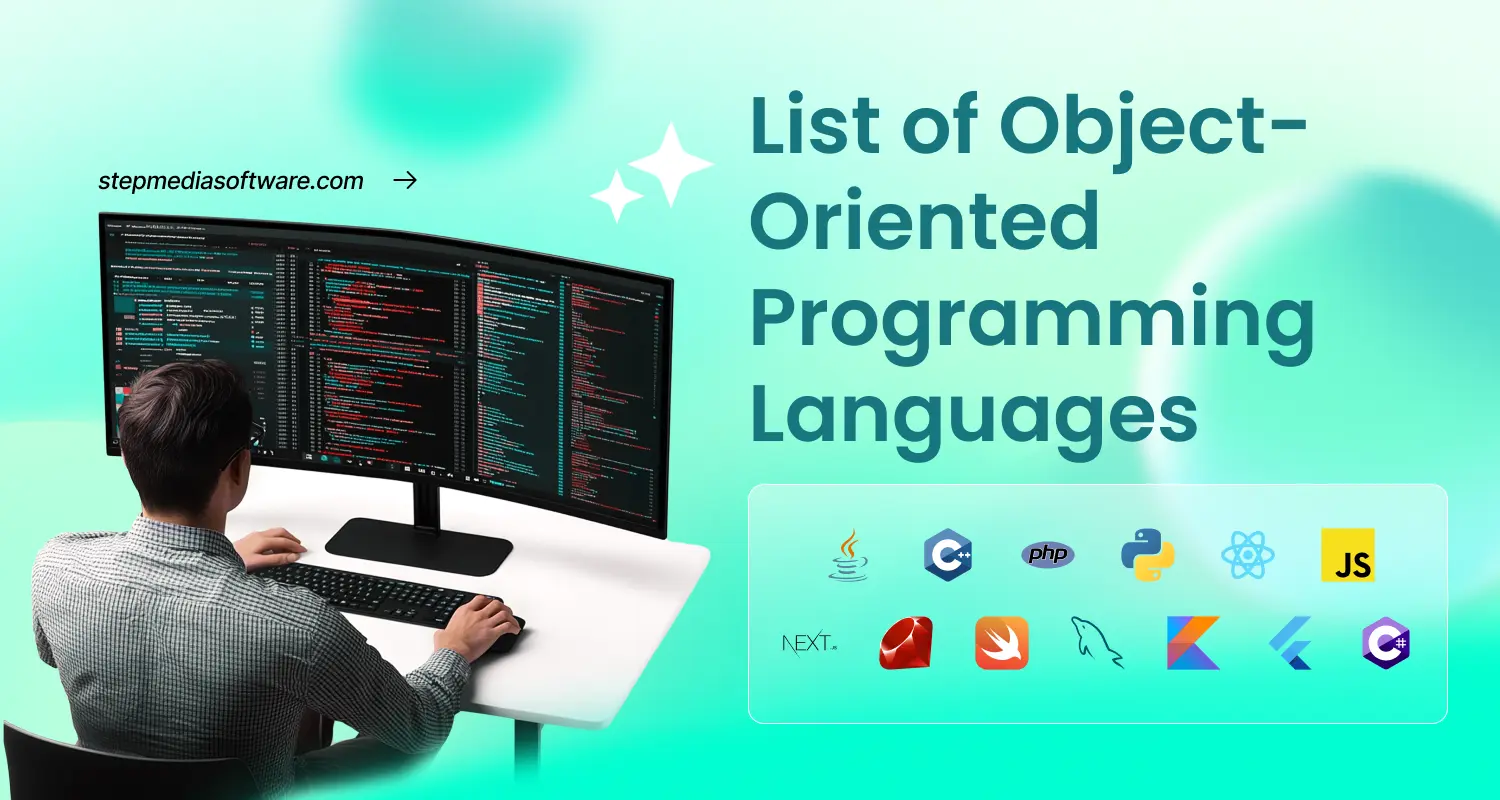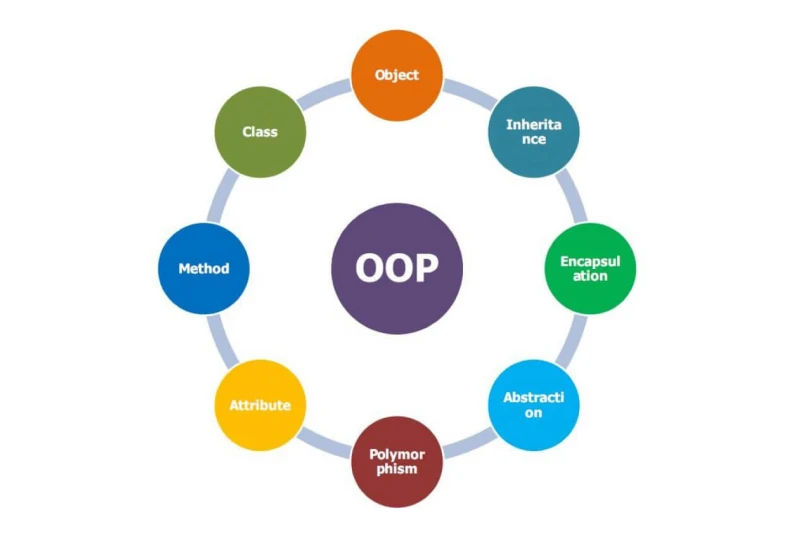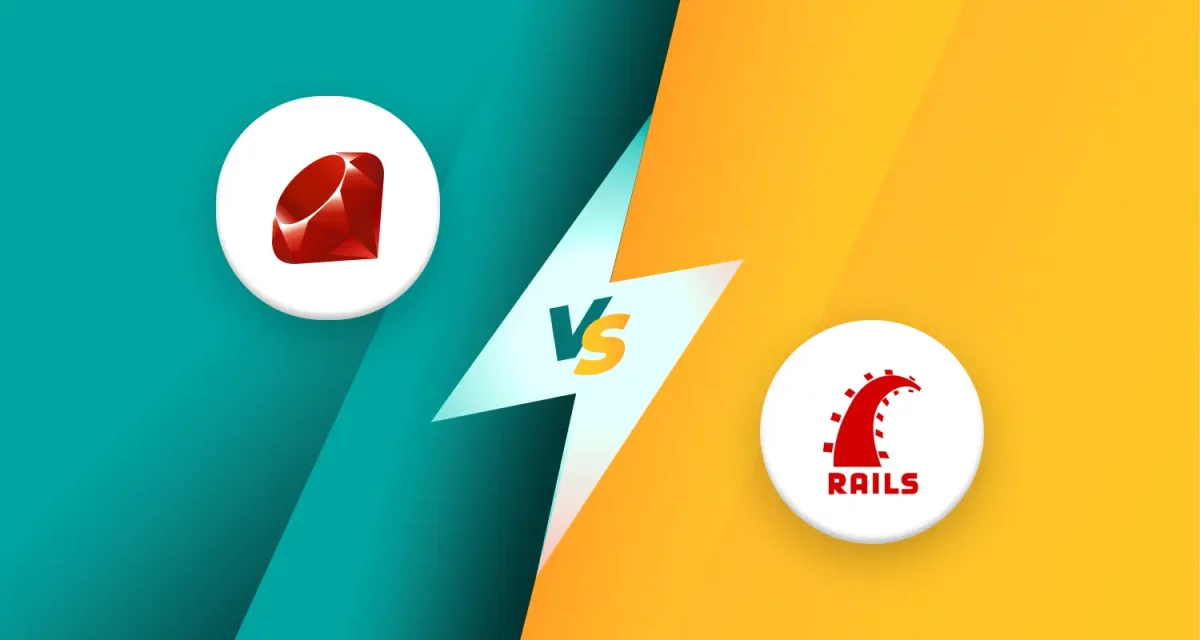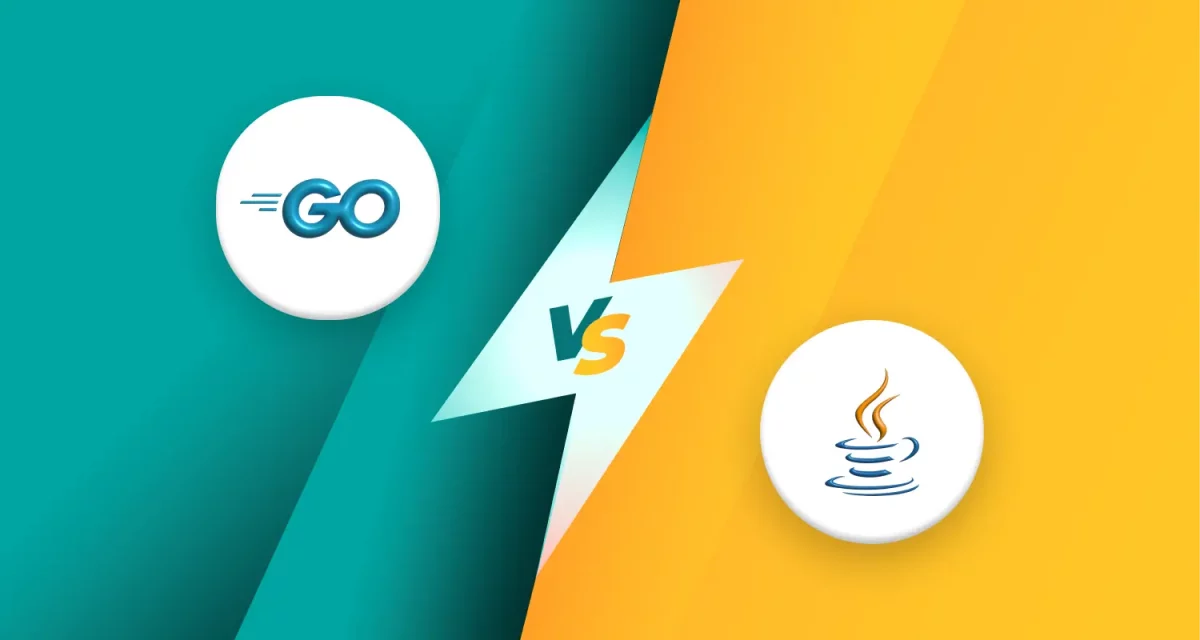
This article provides a comprehensive overview, including a list of object-oriented programming languages, their benefits, and how to select the right one for your projects. Whether you’re a beginner or an experienced developer, this guide will help you ‘learn object-oriented programming’ and understand its practical applications.
1. What are Object-Oriented Programming (OOP) Languages?
Object-Oriented Programming (OOP) languages are a powerful paradigm that structures software design around objects, rather than functions and logic. Understanding the core object-oriented programming concepts is essential to grasping how these languages operate. At the heart of OOP are four fundamental principles:
- Encapsulation: This involves bundling data (attributes) and methods (functions) that operate on the data into a single unit, or object. Think of it as a protective shield, preventing direct access to the internal workings of an object and controlling how data is modified.
- Inheritance: This mechanism allows a new class (subclass or derived class) to inherit properties and behaviors from an existing class (superclass or base class). Inheritance promotes code reusability and establishes an ‘is-a’ relationship between classes.
- Polymorphism: Literally meaning ‘many forms,’ polymorphism enables objects of different classes to respond to the same method call in their own specific ways. This allows for flexibility and adaptability in software design.
- Abstraction: This principle focuses on hiding complex implementation details and showing only the necessary information to the user. It simplifies interaction with objects by providing a high-level view.

These concepts form the foundation of object-oriented design, which emphasizes modeling real-world entities and their relationships. Many OOP languages are class-based languages, meaning they use classes to define the structure and behavior of objects. A class serves as a blueprint for creating objects, specifying their attributes and methods. Understanding these core principles is vital for anyone delving into the world of OOP.
2. A comprehensive list of object-oriented programming languages
Now that we understand the core concepts of OOP, let’s explore a comprehensive list of object-oriented programming languages. These languages are widely used across various industries, and each offers unique strengths and features. Below, you’ll find a list of object-oriented programming languages with examples to illustrate their practical application.
2.1. Java
Java is a class-based, object-oriented programming language designed to have as few implementation dependencies as possible. It’s known for its ‘write once, run anywhere’ (WORA) capability.
Key features:
- Platform independence (JVM).
- Strong memory management.
- Extensive standard libraries.
- Robust security features.
Example code:
public class Greeting {private String message;
public Greeting(String message) {this.message = message;
}
public void sayHello() {
System.out.println(message);
}
public static void main(String[] args) {
Greeting greeting = new Greeting(“Hello, Java!”);
greeting.sayHello();
}
- Common use cases: Enterprise applications, Android development, web applications, and large-scale systems.
2.2. C++
C++ is a powerful, general-purpose programming language that supports both procedural and object-oriented programming. It’s known for its performance and control over system resources.
Key features:
- High performance.
- Low-level memory manipulation.
- Extensive standard template library (STL).
- Support for multiple programming paradigms.
Example code:
#include #include class Greeting {private:std::string message;
public:
Greeting(std::string message) : message(message) {}
void sayHello() {std::cout << message << std::endl;
}
};
int main() {Greeting greeting(“Hello, C++!”);
greeting.sayHello();return 0;
}
- Common use cases: Game development, system software, high-performance applications, and embedded systems.
Read more >>> Rust vs C++: Which Language Reigns Supreme in 2025?
2.3. Python
Python is a high-level, interpreted programming language known for its readability and simplicity. It supports multiple programming paradigms, including object-oriented programming.
Key features:
- Simple and easy to learn.
- Extensive libraries (NumPy, Pandas, etc.).
- Dynamic typing.
- Large and active community.
Example code:
class HelloWorld:
def say_hello(self):
print(“Hello, World!”)
hello = HelloWorld()
hello.say_hello()
- Common use cases: Web development, data science, machine learning, and scripting.
Read more >>> Top 18 Web Programming Languages You Need to Know
2.4. Ruby
Ruby is a dynamic, open-source programming language with a focus on simplicity and productivity. It follows the principle of least astonishment.
Key features:
- Elegant syntax.
- Dynamic typing.
- Powerful metaprogramming capabilities.
- Ruby on Rails framework.
Example code:
- class Greetingdef initialize(message)@message = messageenddef say_hello
- puts @messageendend
- greeting = Greeting.new(“Hello, Ruby!”)
- greeting.say_hello
- Common use cases: Web development, scripting, and prototyping.
Read more >>> Ruby vs PHP: Which Language is Best for Web Development?
2.5. C#
C# is a modern, object-oriented programming language developed by Microsoft for the .NET platform. It combines the power of C++ with the ease of use of Visual Basic.
Key features:
- .NET platform integration.
- Garbage collection.
- Strong typing.
- LINQ (Language Integrated Query).
Example code:
- public class Greeting
- {private string message;
- public Greeting(string message)
- {this.message = message;
- }
- public void SayHello()
- {
- System.Console.WriteLine(message);
- }
- public static void Main(string[] args)
- {
- Greeting greeting = new Greeting(“Hello, C#!”);
- greeting.SayHello();
- }
- }
- Common use cases: Windows applications, game development (Unity), and web services.
Read more >>> C# vs Java: Similarities, Differences, and Practical Insights
2.6. PHP
PHP is a widely-used, open-source scripting language designed for web development. It’s particularly well-suited for creating dynamic web pages.
Key features:
- Server-side scripting.
- Large community and ecosystem.
- Easy database integration.
Example code:
-
<?phpclass Greeting {private $message;
- public function sayHello() {echo $this->message;
- }
-
public function sayHello() {echo $this->message;
- }
- }
- $greeting = new Greeting(“Hello, PHP!”);
- $greeting->sayHello();
- ?>
- Common use cases: Web development, content management systems (WordPress).
2.7. TypeScript
TypeScript is a statically typed superset of JavaScript that compiles to plain JavaScript. It adds optional static typing, classes, and interfaces to JavaScript.
Key features:
- Static typing.
- Improved code maintainability.
- Enhanced developer tooling.
Example code:
- class Greeting {private message: string;
- constructor(message: string) {this.message = message;
- }
- sayHello(): void {console.log(this.message);
- }
- }
- const greeting = new Greeting(“Hello, TypeScript!”);
- greeting.sayHello();
- Common use cases: Large-scale JavaScript applications, front-end development (Angular).
2.8. Swift
Swift is a powerful and intuitive programming language for macOS, iOS, watchOS, and tvOS development.
Key features:
- Modern and safe.
- Fast performance.
- Interactive playgrounds.
Example code:
- class Greeting {let message: Stringinit(message: String) {self.message = message
- }
- func sayHello() {print(message)
- }
- }
- let greeting = Greeting(message: “Hello, Swift!”)
- greeting.sayHello()
- Common use cases: iOS and macOS applications.
2.9. Kotlin
Kotlin is a modern, statically typed programming language that runs on the Java Virtual Machine (JVM) and can also be compiled to JavaScript or native code.
Key features:
- Interoperability with Java.
- Concise syntax.
- Null safety.
Example code:
- class Greeting(val message: String) {fun sayHello() {
- println(message)
- }
- }
- val greeting = Greeting(“Hello, Kotlin!”)
- greeting.sayHello()
- Common use cases: Android development, server-side development.
Read more >>> 10 Difference Between Kotlin and Java – Which is better?
2.10. R
R is a programming language and free software environment for statistical computing and graphics.
Key features:
- Statistical analysis.
- Data visualization.
- Extensive packages.
Example code:
- Greeting <- setClass(“Greeting”, slots = list(message = “character”))
- setMethod(“initialize”, “Greeting”,
- function(.Object, message = “Hello, R!”){
- .Object@message <- message
- return(.Object)
- }
- )
- setMethod(“sayHello”, “Greeting”,
- function(object){
- print(object@message)
- }
- )
- greeting <- Greeting(message = “Hello, R!”)
- sayHello(greeting)
- Common use cases: Statistical analysis, data mining, and scientific research.
2.11. Rust
Rust is a systems programming language that focuses on safety, performance, and concurrency.
Key features:
- Memory safety without garbage collection.
- High performance.
- Concurrency support.
Example code:
- struct Greeting {
- message: String,
- }
- impl Greeting {fn new(message: String) -> Greeting {
- Greeting { message }
- }
- fn say_hello(&self) {println!(“{}”, self.message);
- }
- }
- fn main() {let greeting = Greeting::new(String::from(“Hello, Rust!”));
- greeting.say_hello();
- }
- Common use cases: System programming, embedded systems, and web services.
2.12. Objective-C
Objective-C is a general-purpose, object-oriented programming language that was the primary language used by Apple for macOS and iOS development before Swift.
Key features:
- Dynamic runtime.
- Message passing.
Example code:
- #import <Foundation/Foundation.h>@interface Greeting : NSObject
- {NSString *message;
- }
- – (id)initWithMessage:(NSString *)msg;
- – (void)sayHello;
- @end@implementation Greeting
- – (id)initWithMessage:(NSString *)msg {self = [super init];if (self) {
- message = msg;
- }return self;
- }
- – (void)sayHello {NSLog(@”%@”, message);
- }
- @endint main(int argc, const char * argv[]) {@autoreleasepool {
- Greeting *greeting = [[Greeting alloc] initWithMessage:@”Hello, Objective-C!”];
- [greeting sayHello];
- }return 0;
- }
- Common use cases: Legacy iOS and macOS applications.
2.13. Go
Go (Golang) is a statically typed, compiled programming language designed at Google. It’s known for its simplicity and efficiency.
Key features:
- Concurrency (goroutines).
- Simple syntax.
- Fast compilation.
Example code:
- package main
- import “fmt”type Greeting struct {
- message string
- }
- func (g Greeting) SayHello() {
- fmt.Println(g.message)
- }
- func main() {
- greeting := Greeting{message: “Hello, Go!”}
- greeting.SayHello()
- }
- Common use cases: Server-side applications, cloud computing, and network programming.
2.14. Ada 95
Ada 95 is a structured, statically typed, imperative, and object-oriented high-level computer programming language, extended from Ada 83.
Key features:
- Strong typing.
- Reliability.
- Safety-critical systems.
Example code:
- with Ada.Text_IO; use Ada.Text_IO;
- package Greetings istype Greeting is tagged private;
- procedure Say_Hello (This : Greeting);
- privatetype Greeting is tagged record
- Message : String := “Hello, Ada!”;end record;
- end Greetings;
- package body Greetings isprocedure Say_Hello (This : Greeting) isbegin
- Put_Line (This.Message);end Say_Hello;
- end Greetings;
- with Greetings; use Greetings;
- procedure Main is
- G : Greeting;
- begin
- Say_Hello (G);
- end Main;
- Common use cases: Aerospace, defense, and safety-critical applications.
2.15. MATLAB
MATLAB is a proprietary multi-paradigm programming language and numeric computing environment developed by MathWorks.
Key features:
- Matrix operations.
- Data visualization.
- Numerical computation.
Example code:
- classdef Greetingproperties
- Messageendmethodsfunction obj = Greeting(message)
- obj.Message = message;endfunction sayHello(obj)disp(obj.Message);endendend
- greeting = Greeting(‘Hello, MATLAB!’);
- greeting.sayHello();
- Common use cases: Engineering, scientific research, and data analysis.
3. Benefits of using object-oriented programming languages
Using object-oriented programming languages in development offers numerous advantages that contribute to creating robust, maintainable, and scalable software. Here are some key benefits:
Modularity and reusability
OOP promotes modular design, where code is organized into self-contained objects. These objects can be reused across different parts of an application or even in entirely different projects. This reusability reduces development time and effort, as developers don’t have to rewrite code for common functionalities. By using classes and objects, developers can create modular blocks of code that can be used again and again.
Maintainability:
Because OOP organizes code into well-defined objects, it simplifies maintenance. Changes or bug fixes can be isolated to specific objects, minimizing the impact on other parts of the application. This makes it easier to update and debug code, leading to more maintainable software over time.
Scalability:
OOP’s modular nature makes it easier to scale applications. As an application grows, new objects can be added without disrupting existing code. This allows developers to build complex systems that can handle increasing workloads and evolving requirements. The ability to create new objects and classes as needed makes it easy to increase the size and complexity of a project.
Real-world modeling:
OOP allows developers to model real-world entities and their relationships using objects. This makes it easier to understand and design complex systems, as the code reflects the structure and behavior of the problem domain. By modeling real world items, developers can create code that is easier to understand by other developers, and even non-developers.
Improved code organization
OOP provides a structured approach to code organization, making it easier to manage and understand large codebases. Encapsulation and abstraction help to hide unnecessary details and promote a clear separation of concerns. This improved organization enhances code readability and collaboration among developers.
4. How to choose the right object-oriented programming language
Selecting the appropriate object-oriented programming languages for your project is crucial for its success. With numerous options available, understanding your specific needs and considering various factors will help you make an informed decision. Here’s a guide on how to choose the right object-oriented programming language:
Project requirements:
Start by clearly defining your project’s goals and requirements. What type of application are you building? Is it a web application, mobile app, desktop software, or a data-intensive project? Certain languages are better suited for specific domains. For example, Python is excellent for data science, while Swift is ideal for iOS development.
Team expertise:
Consider the skills and experience of your development team. If your team is proficient in Java, it might be more efficient to stick with Java rather than learning a new language. Leveraging existing expertise can save time and reduce the learning curve.
Community support
A strong and active community can provide invaluable support, resources, and libraries. Languages with large communities tend to have more readily available documentation, tutorials, and third-party tools. This is very important when running into issues during development.
Performance needs
If performance is a critical factor, choose a compiled language like C++ or Java. Interpreted languages like Python or Ruby might not be suitable for performance-sensitive applications. Consider the speed and efficiency requirements of your project.
Learning curve
Evaluate the learning curve of the language. Some languages, like Python, are known for their simplicity and ease of learning, making them ideal for beginners. Others, like C++, have a steeper learning curve and require more time and effort to master. Consider the time and resources available for learning a new language.
Matching languages to specific project types:
- Web development: Python (Django, Flask), Ruby (Ruby on Rails), PHP, JavaScript (Node.js).
- Mobile development: Java (Android), Kotlin (Android), Swift (iOS), C# (Xamarin/Unity).
- Data science and machine learning: Python (NumPy, Pandas, TensorFlow), R.
- Game development: C++, C# (Unity).
- System programming: C, C++, Rust, Go.
- Enterprise applications: Java, C#.
By carefully considering these factors, you can select the most appropriate OOP language that aligns with your project’s needs and ensures its successful development.
5. The bottom lines
Throughout this guide, we’ve journeyed through the core principles of Object-Oriented Programming (OOP) and examined a comprehensive list of object-oriented programming languages. We’ve highlighted the significant benefits of OOP in development, including modularity, maintainability, and scalability. Understanding how to choose the right language for your project is crucial, and we’ve provided guidance to assist in that decision.
OOP remains a vital paradigm in modern software development, enabling the creation of robust and efficient applications. We encourage you to explore and experiment with the various languages discussed. Practice regularly, and continue expanding your knowledge of OOP.




